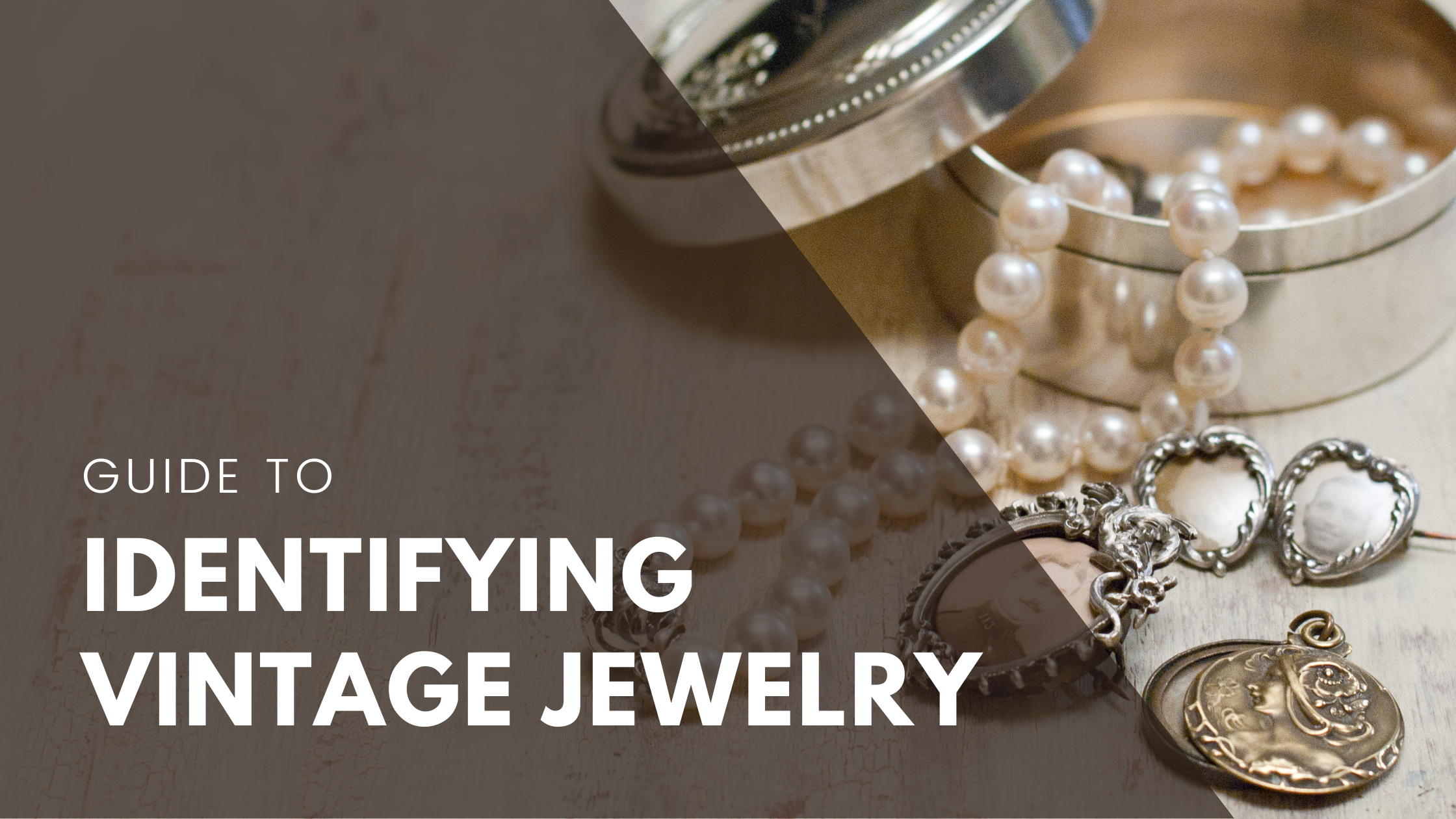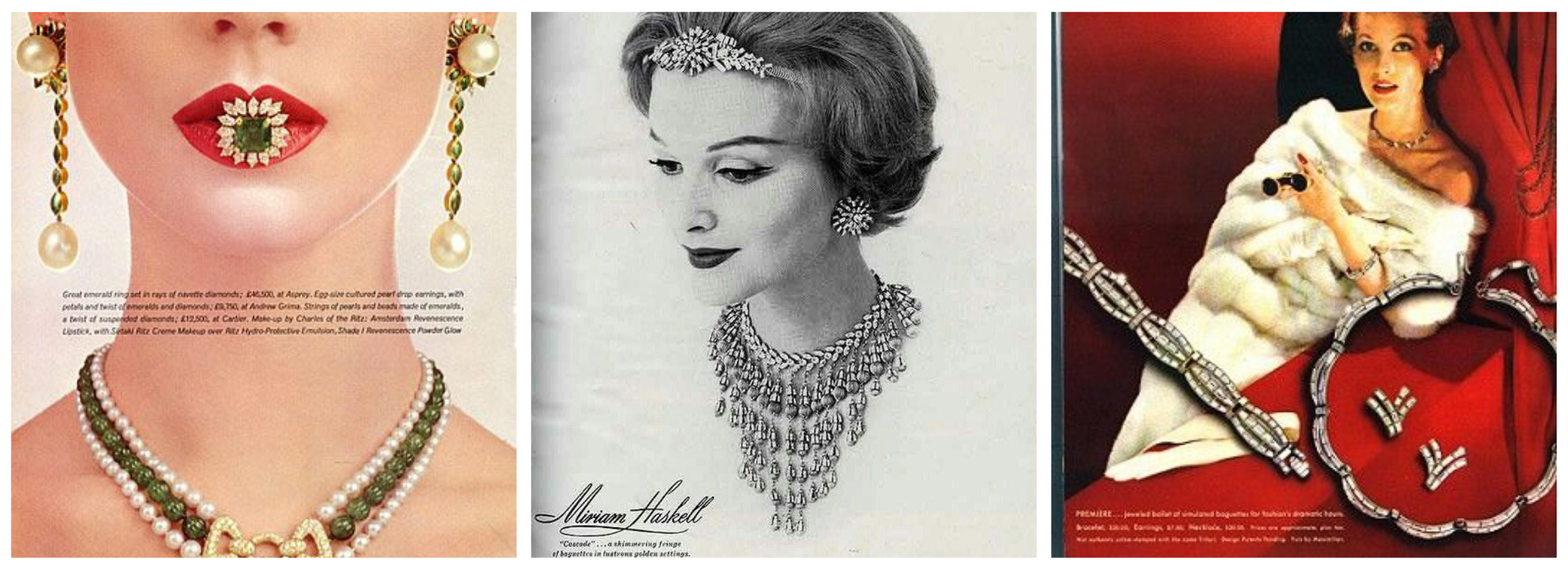How to Identify and Date Vintage Jewelry
Vintage jewelry can be a beautiful and unique addition to anyone's collection. Whether you're interested in the history and craftsmanship of these pieces or simply enjoy the beauty of vintage designs, learning how to identify and date vintage jewelry can be a fascinating and rewarding hobby.
Vintage jewelry comes in many styles and materials, each with its own unique history and significance. Understanding a piece's materials, construction, and style can uncover its story and learn more about its historical place.
Identifying and dating vintage jewelry can also be important in determining its value and ensuring its authenticity. Whether you're a collector, a reseller, or simply curious about the history of these beautiful pieces, many resources are available to help you learn more about vintage jewelry and how to identify and date it accurately.
This blog will explore some tips and resources for identifying and dating vintage jewelry. Whether you're new to the world of vintage jewelry or a seasoned collector, there's always something new to learn and discover.
Types and Styles of Popular Vintage Jewelry
There are many types of vintage jewelry that are popular among collectors and fashion enthusiasts. Here are some examples:
Art Deco jewelry: Art Deco jewelry was popular in the 1920s and 1930s and is known for its geometric shapes and use of bold colors.
Victorian jewelry: Victorian jewelry was popular in the mid to late 1800s and often features intricate designs, floral motifs, and romantic themes.
Retro jewelry: Retro jewelry was popular in the 1940s and 1950s, often featuring large, bold designs emphasizing glamour and luxury.
Mid-Century Modern jewelry: Mid-Century Modern jewelry was popular in the 1950s and 1960s and is known for its clean lines, geometric shapes, and use of materials like Lucite and plastic.
Art Nouveau jewelry: Art Nouveau jewelry was popular in the late 1800s and early 1900s and often features organic, flowing designs inspired by nature.
Bakelite jewelry: Bakelite was a popular plastic used in jewelry during the 1930s and 1940s, often in bright colors and bold designs.
Costume jewelry: Costume jewelry is any jewelry made with non-precious materials like glass, plastic, or base metals. Vintage costume jewelry from the 20th century is particularly popular among collectors.
Tips for Identifying Vintage Jewelry
Look for hallmarks: Many vintage jewelry pieces have hallmarks that indicate the metal content or the maker. Look for hallmarks on the clasp, chain, or pendant.
Examine the clasp: The type of clasp can help you determine the age of a piece. For example, older brooches may have a C-clasp or trombone clasp, while newer brooches may have a safety clasp or locking clasp. Older necklaces may have a barrel clasp or fishhook clasp, while newer necklaces may have a lobster clasp or spring ring clasp.
Check the style: The style of the jewelry can also give you clues about its age. For example, Art Deco jewelry is typically geometric and streamlined, while Victorian jewelry often features floral motifs and intricate designs.
Look for signs of wear: Vintage jewelry may show signs of wear, such as tarnishing, scratches, or missing stones. These signs can help you determine if the brooch is authentic and vintage.
Research the maker: If you can identify the maker, you can learn more about their style and history. This can help you determine if the jewelry is vintage and authentic.
Get an appraisal: If you are unsure about the authenticity or value of a vintage piece of jewelry, you can have it appraised by a professional. An appraiser can examine the brooch, necklace, or bracelet and give you an estimate of its age and value.
High-end Brands of Vintage Jewelry
Cartier: Cartier is a French luxury jewelry brand that has been in operation since the mid-19th century. Their vintage pieces are highly prized for their quality and design.
Tiffany & Co.: Tiffany & Co. is an American jewelry brand that was founded in 1837. They are known for their high-end jewelry and silverware; their vintage pieces are highly sought after.
Van Cleef & Arpels: Van Cleef & Arpels is a French luxury jewelry brand that has been in operation since 1896. They are known for their intricate designs and use of high-quality gemstones.
Bulgari: Bulgari is an Italian luxury jewelry brand that was founded in 1884. Their vintage pieces are known for their bold, colorful designs and use of precious materials like gold and diamonds.
Chanel: Chanel is a French fashion and jewelry brand that was founded in 1909. Their vintage jewelry is highly sought after for its timeless elegance and classic design.
Miriam Haskell: Miriam Haskell was an American jewelry designer who started her own line in the 1920s. Her vintage pieces are known for their intricate beadwork and use of unusual materials like glass and celluloid.
Manufactures of Vintage Costume Jewelry
These are just a few examples of vintage costume jewelry makers that are highly sought after, but there are many others as well. Vintage costume jewelry is often less expensive than high-end or designer jewelry but can still be highly collectible and valuable.
Coro: Coro was a costume jewelry company founded in the early 1900s in New York City. They were known for their affordable, high-quality pieces that were often inspired by high-end jewelry designs.
Trifari: Trifari was another costume jewelry company founded in the early 1900s in New York City. They were known for their high-quality materials and intricate designs, and their vintage pieces are highly sought after.
Eisenberg: Eisenberg was a costume jewelry company that was founded in the 1920s in Chicago. They were known for their high-end designs and use of high-quality rhinestones and other materials.
Weiss: Weiss was a costume jewelry company that was founded in the mid-1940s in New York City. They were known for their high-quality materials and innovative designs, and collectors highly prize their vintage pieces.
Lisner: Lisner was a costume jewelry company that was founded in the 1900s in New York City. They were known for their affordable, high-quality pieces that were often inspired by high-end jewelry designs.
Resources You Can Use to Identify and Date Vintage Jewelry
There are many resources available to help identify and date vintage jewelry. Here are some options:
Jewelry books: There are many books on vintage jewelry that can help you identify and date pieces. Some popular options include "Costume Jewelry 101" by Julia C. Carroll,” "Signed Beauties of Costume Jewelry" by Marcia "Sparkles" Brown, and "Warman's Costume Jewelry" by Pamela Y. Wiggins.
Online resources: Many websites and forums are dedicated to vintage jewelry, where you can ask questions, share information, and learn from experts and enthusiasts. Some popular options include the American Society of Jewelry Historians, the Costume Jewelry Collectors International (CJCI) forum, and the Society of Jewellery Historians (UK).
Appraisers: If you have a piece of vintage jewelry and want to know more about its history and value, you can take it to an appraiser specializing in it. They can examine the piece and provide you with information on its age, materials, and value.
Antique and vintage jewelry dealers: Antique and vintage jewelry dealers can also be a good resource for identifying and dating vintage jewelry. They may have expertise in specific time periods or designers and can help you determine the age and value of your piece.
Museum collections: Many museums have vintage jewelry collections, which can be a great resource for learning about different styles, materials, and time periods. Some museums even have online collections that you can browse and learn from.
Identifying and dating vintage jewelry is an important step when buying or collecting vintage jewelry pieces, and with a bit of research and practice, anyone can become an expert. Whether you're looking for a unique piece to add to your collection or want to learn more about the history of jewelry, vintage pieces offer a glimpse into the past and a world of beauty and craftsmanship.









